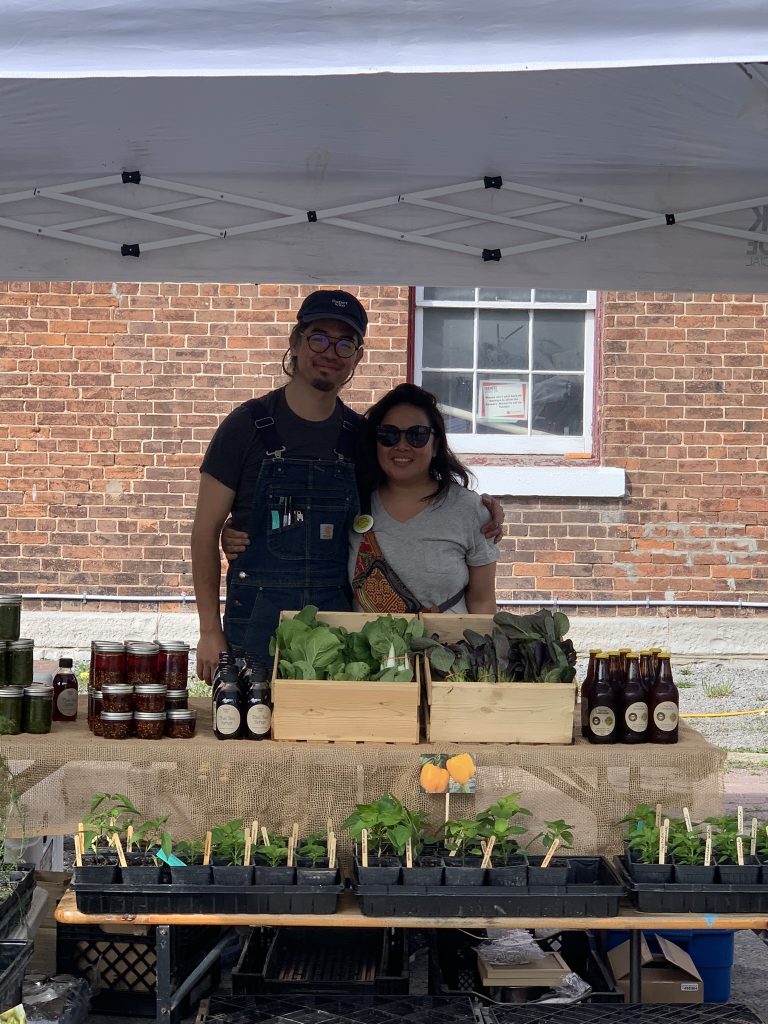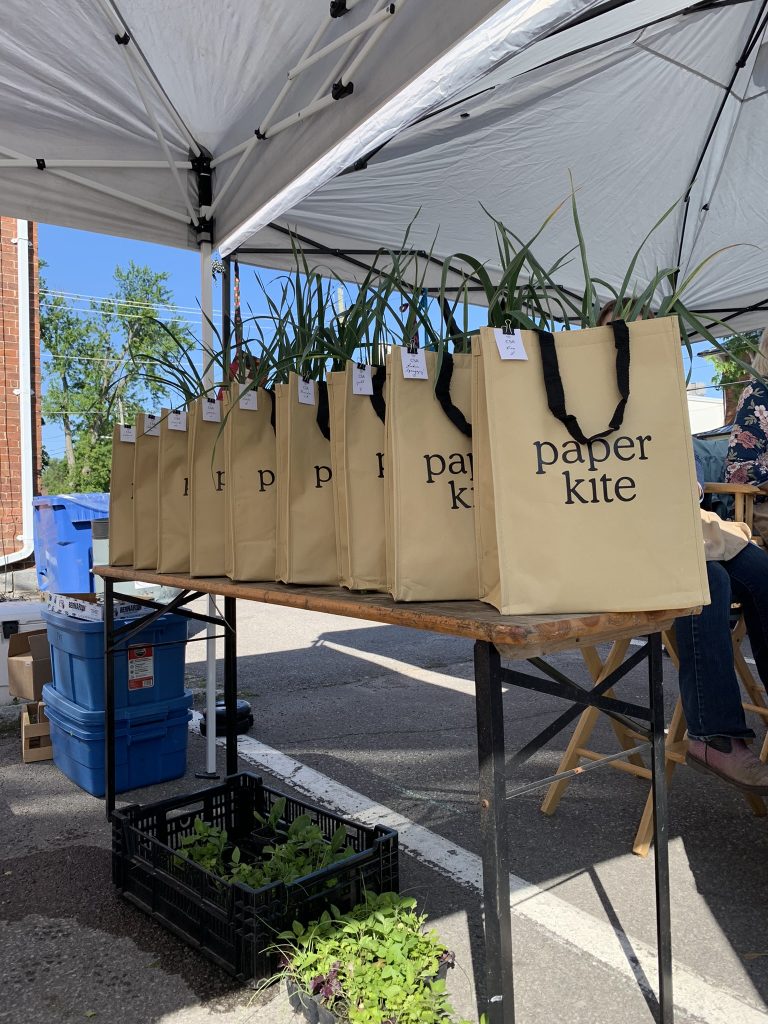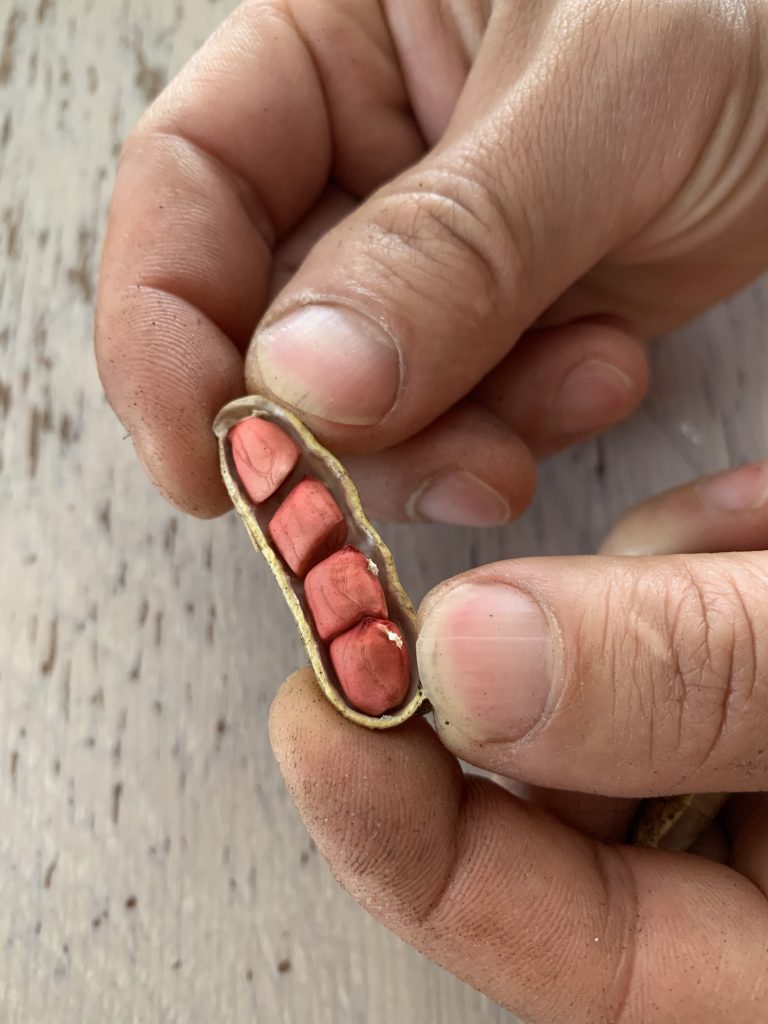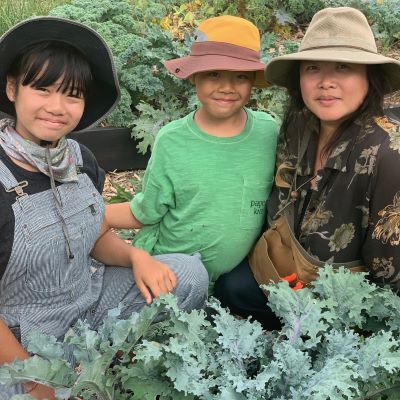- Please introduce us to your farm! How did Paper Kite Farm get started, and where did its name come from?
Paper Kite Farm is a small family Farm in Prince Edward County, on the traditional territory of the Anishnaabeg, Wendat and Haudenosaunee People, adjacent to the Kanien’keha:ka community of Tyendinaga.

The Farm began as a means to an end during the pandemic; and to feel grounded and connected during those uncertain times. We lost a lot in the Pandemic and needed to re-centre and start new again with family being the focus.
The name, Paper Kite, took some time to come up with! We wanted to pay homage to our heritage. Both Paper and Kites originate from Hans’ Chinese heritage, and since we’re in windy PEC, it resonated with us.
- Tell us about yourselves. Who is behind Paper Kite Farm? What are you passionate about, and why do you farm the way you do?
Paper Kite is your mom and pop backyard gardening type of small scale farm. Myself (Judy) along with my partner (Hans) run the farm full time from March to November.
I (Judy) grew up on homestead-like property. My parents were Farmers in Laos and fled to Thailand during the Vietnam War. When we arrived in the USA, they began guerrilla gardening in any public green space they found as a way to have access to foods from their home country. That quickly transitioned to growing in community gardens, a friend’s backyard, and finally a home of their own.
We are currently cultivating about ¼ acre of our 2-acre rural residential property, on what was once just lawn. We initially intended to create a permaculture oasis, but added on market gardening to our plans, as it was a quicker way to feed and contribute to our community.
 Growing and working with the land is about more than sustenance and food security. It was also an identity project exploring our cultures, both Hmong and Chinese. It’s about trying to grow from the seeds that have made their way from Laos to North America, and the food that our grandparents loved, and sharing that as well.
Growing and working with the land is about more than sustenance and food security. It was also an identity project exploring our cultures, both Hmong and Chinese. It’s about trying to grow from the seeds that have made their way from Laos to North America, and the food that our grandparents loved, and sharing that as well.
We also knew we wanted to farm in a way that would not only work with the land, but to leave it better than we found it. Generations of Indigenous peoples had stewarded the land before us, only to have it clear cut by European and Loyalist settlers, and we wanted to do what we could to honour the land that has sustained so many before us.
- What are your favourite crops to grow and why?
I love growing every single thing, from flowers, herbs, to all kinds of produce. However, If I had to choose, I’d have to say that my favourite is the Hmong cucumber. The cucumber is deliciously sweet and crispy, but the efforts my mom took to bring it to her new home will always remind me of the resiliency of my people.
- How did a decade of running a small family hotel prepare you for farming? What has been most surprising?
Running a small family hotel and farming is quite similar. When we were running a hotel, it was about curating a local experience for visitors in a collective effort with our team. I feel like the kind of attention and care going into curating that experience is the same with caring for seeds, seedlings, and then when they’re in the fields.
You’ve got to listen to the weather, be a couple steps ahead, and get a feel of the land. At the end of the day it’s the kind of effort you put into being mindful and human. I believe that’s what it takes in both sectors.
- Last season, your farm participated in EFAO’s Farmer-Led Research program. What was that experience like? Why did you feel compelled to be a part of the program?
We had a great experience! I think as new farmers, our naiveté was both a curse and a blessing. We didn’t have years of experience, nor did we have the opportunity to learn from past mistakes. However, this allowed us to make new ones, and ask new questions. The question that we wondered about most was whether we could cut peat out of our system. We know how important peat bogs are for the environment, and how much carbon they sequester, but there isn’t really an obvious replacement for seed starting. We just wanted to try and see if we could replace it with something we can source locally, and BioChar turned out to be a great substitute.

- What did you learn from the research? What were some of the formal and informal results? What might other farmers want to know about what you saw in your trials?
Not only was BioChar a possible substitute, it appeared as a superior alternative to peat moss. The tomatoes we grew using BioChar were by far the strongest starts we had, and needed the least watering. However, we also learned that homemade soil mixes suffer from other issues, such as possible pathology problems, and weeds within. The control group using ProMix BX did non suffer from any inconsistencies.
- Would you perform Farmer-Led Research again? Why or why not?
This year was already packed with plans, so we couldn’t take it on. However, we still have lots of questions we’d like answered regarding BioChar, so we would like to participate again.
- Do you have any ideas for future research that other farmers might be interested in doing?
We really think that BioChar has amazing potential, and would love to see more farms trial it. One potential use is to see if we can reduce the amount of inputs needed.
- What’s next for Paper Kite Farm? What new endeavours does 2023 hold?
We are opening a farm stand, and are trying to grow some rice! We have all sorts of other interesting crops that we are trialing, but rice is the most exciting for us.
- If other EFAO members want to connect with you, how can they get in touch?
The best way would be to reach out to us through Instagram, @paperkite.farm, by email, or by just dropping by.

